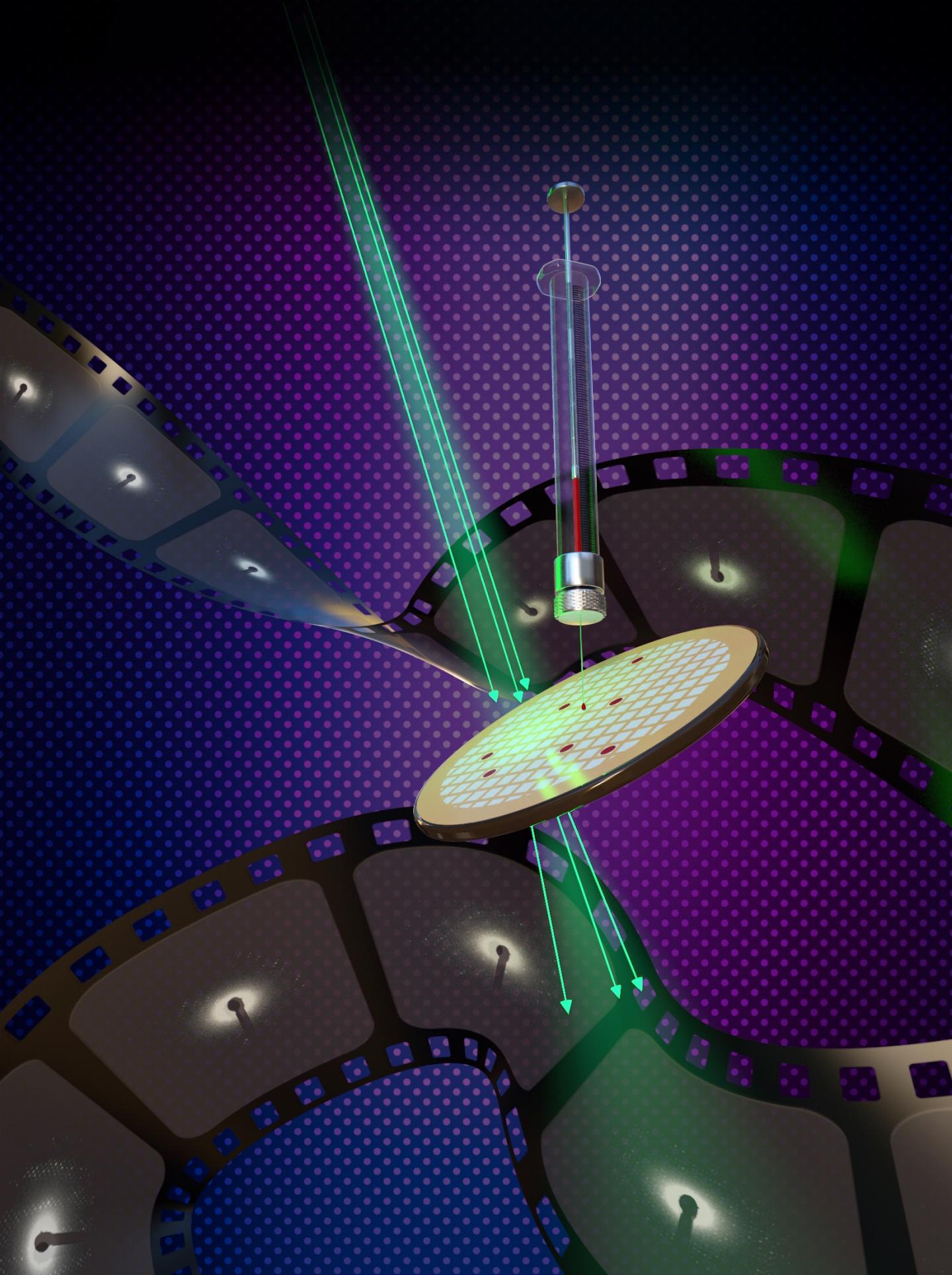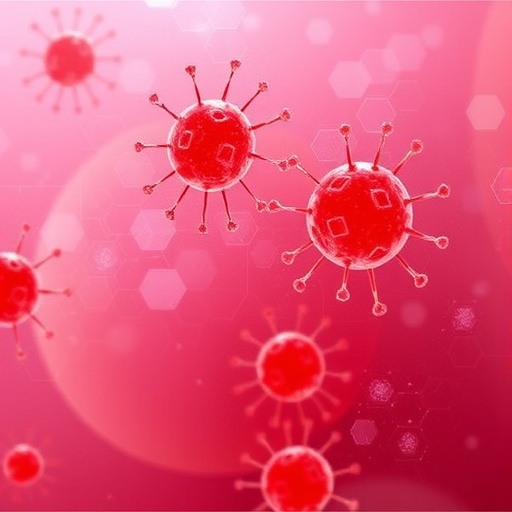
Credit: Graphic by Jason Drees for the Biodesign Institute at Arizona State University
The number of proteins in the human body, collectively known as the proteome, is vast. Somewhere between 80,000 and 400,000 proteins circulate in our cells, tissues and organs, carrying out a broad range of duties essential for life. When proteins go awry, they are responsible for a myriad of serious diseases.
Now, researchers at the Biodesign Center for Applied Structural Discovery and ASU’s School of Molecular Sciences, along with their colleagues, investigate a critically important class of proteins, which adorn the outer membranes of cells. Such membrane proteins often act as receptors for binding molecules, initiating signals that can alter cell behavior in a variety of ways.
A new approach to acquiring structural data of membrane proteins in startling detail is described in the new study. Cryogenic electron microscopy (or cryo-EM) methods, a groundbreaking suite of tools, is used. Further, use of so-called LCP crystallization and Microcrystal electron diffraction (MicroED) help unveil structural details of proteins that have been largely inaccessible through conventional approaches like X-ray crystallography.
The findings describe the first use of LCP-embedded microcrystals to reveal high-resolution protein structural details using MicroED. The new research graces the cover of the current issue of the Cell Press journal Structure.
“LCP was a great success in membrane protein crystallization, according to Wei Liu, a corresponding author of the new study. “The new extensive application of LCP-MicroED offers promise for improved approaches for structural determination from challenging protein targets. These structural blueprints can be used to facilitate new therapeutic drug design from more precise insights.”
One class of membrane proteins of particular interest are the G-protein-coupled receptors (GPCRs), which form the largest and most varied group of membrane receptors found in eukaryotic organisms, including humans.
The physiological activities of GPCRs are so important that they are a major target for a wide range of therapeutic drugs. This is where problems arise however, as determining the detailed structure of membrane proteins–an essential precursor to accurate drug design– often poses enormous challenges.
The technique of X-ray crystallography has been used to investigate the atomic-scale structures and even dynamic behavior of many proteins. Here, crystallized samples of the protein under study are struck with an X-ray beam, causing diffraction patterns, which appear on a screen. Assembling thousands of diffraction snapshots allows a high-resolution 3D structural image to be assembled with the aid of computers.
Yet many membrane proteins, including GPCRs, don’t form large, well-ordered crystals appropriate for X-ray crystallography. Further, such proteins are delicate and easily damaged by X-radiation. Getting around the problem has required the use of special devices known as X-ray free electron lasers or XFELS, which can deliver a brilliant burst of X-ray light lasting mere femtoseconds, (a femtosecond is equal to one quadrillionth of a second or about the time it takes a light ray to traverse the diamere of a virus). The technique of serial femtosecond X-ray crystallography allows researchers to obtain a refraction image before the crystalized sample is destroyed.
Nevertheless, crystallization of many membrane proteins remains an extremely difficult and imprecise art and only a handful of these gargantuan XFEL machines exist in the world.
Enter cryogenic electron microscopy and MicroED. This ground-breaking technique involves flash-freezing protein crystals in a thin veneer of ice, then subjecting them to a beam of electrons. As in the case of X-ray crystallography, the method uses diffraction patterns, this time from electrons rather than X-rays, to assemble final detailed structures.
MicroED excels in collecting data from crystals too small and irregular to be used for conventional X-ray crystallography. In the new study, researchers used two advanced techniques in tandem in order to produce high-resolution diffraction images of two important model proteins: Proteinase K and the A2A adenosine receptor, whose functions include modulation of neurotransmitters in the brain, cardiac vasodilation and T-cell immune response.
The proteins were embedded in a special type of crystal known as a lipidic cubic phase or LCP crystal, which mimics the native environment such proteins naturally occur in. The LCP samples were then subjected to electron microscopy, using the MicroED method, which permits the imaging of extremely thin, sub-micron-sized crystals. Further, continuous rotation of LCP crystals under the electron microscope allows multiple diffraction patterns to be acquired from a single crystal with an extremely low, damage-free electron dose.
The ability to examine proteins that can only form micro- or nanocrystals opens the door to the structural determination of many vitally important membrane proteins that have eluded conventional means of investigation, particularly GPCRs.
###
Media Contact
richard harth
[email protected]
Original Source
https:/
Related Journal Article
http://dx.





